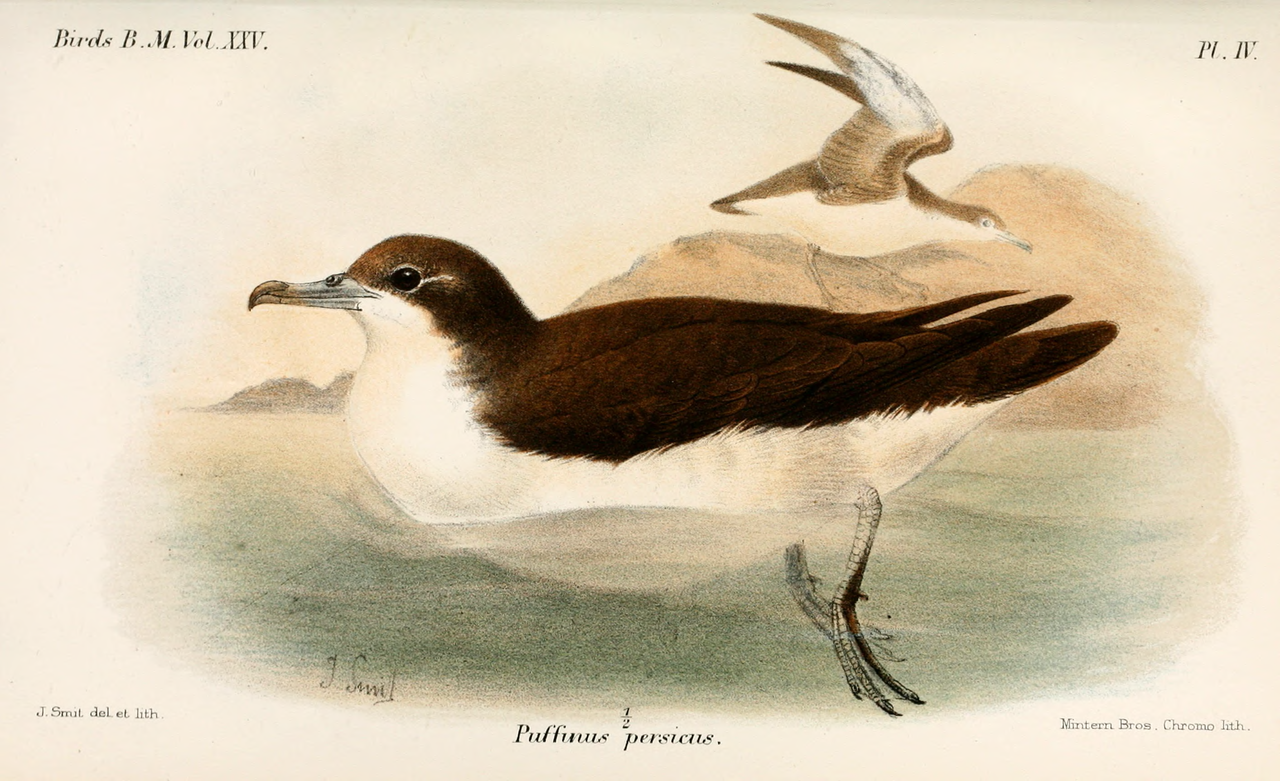Iran Press/Iran news: This 30-centimeter seabird, historically named for its Persian origins, boasts long wings, a small body, a white underbelly, and dark brown upper feathers that appear black from a distance. It thrives in the warm waters of the Persian Gulf and the Sea of Oman, migrating to breeding grounds on the Hallaniyat Islands in the Arabian Sea and the Socotra Archipelago in the Indian Ocean.
Swimming and Hunting Skills
The bird also known as Persian shearwater glides near the water’s surface, using a running start on water to begin flight. Its rapid, irregular wing beats help it navigate harsh winds, while it dips its head into the water to catch fish and other marine life. This makes the shearwater both an adept swimmer and hunter.
Unique Characteristics
The Persian shearwater stands out among other seabirds for its specific coloring—white underbelly and dark brown upper feathers—its uniquely shaped wings, and its distinctive, mournful call. It feeds primarily on small fish and marine creatures, diving below the surface when necessary to capture prey.
 Joseph Smit - Catalogue of the birds in the British Museum (Vol. 25 Plate IV)
Joseph Smit - Catalogue of the birds in the British Museum (Vol. 25 Plate IV)
Ecological Role
As a vital part of the marine food chain, the Persian shearwater regulates small fish and aquatic populations and serves as prey for larger marine predators.
Geographic Distribution and Migration Patterns
The Persian shearwater’s northern subspecies inhabit regions like the southern Red Sea, Gulf of Aden, Somali coast, southern Arabian Peninsula, Sea of Oman, and the shores of Pakistan and India. The southern subspecies mainly resides around the Comoros Archipelago and Tanzania. Unlike other shearwaters, it typically stays in tropical and subtropical regions, only moving seasonally for food or mating.
Protecting this rare seabird, with its deep ties to Persian heritage, is critical for preserving both regional biodiversity and natural history.
206
Read More:
Ancient 3,000-Year-Old Stone Tablet on Display in Taq-e Bostan, Kermanshah
ahmad shirzadian

